This year’s D-Day anniversary, the 76th, is a lot more low key than last year’s – primarily because of the restrictions on travelling and large gatherings due to the COVID-19 pandemic. So we’re going to mark the occasion in our special way, with a collection of genuine photos of Allied airborne and commando forces from the time that have been colorized with modern technology. Never forget.
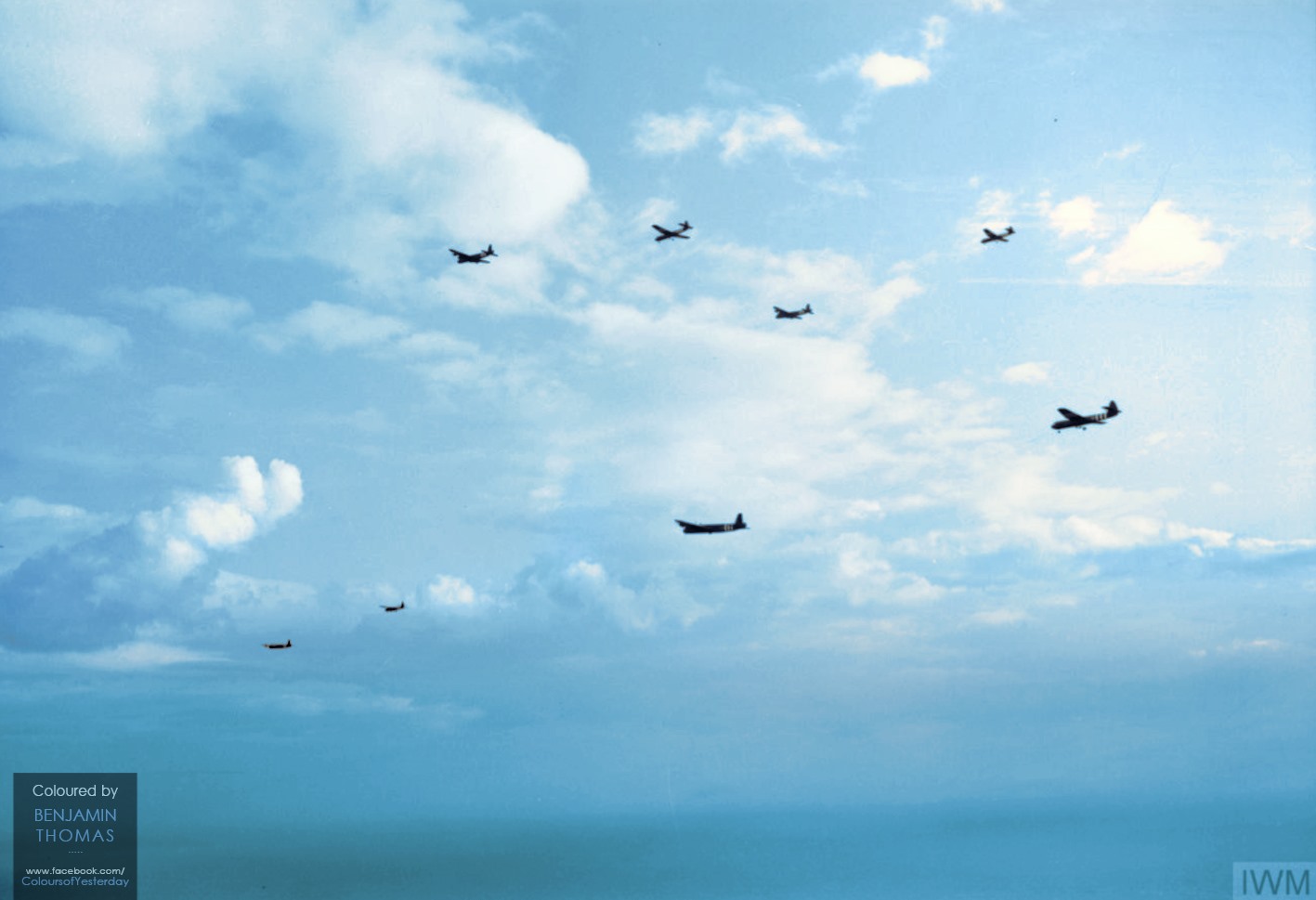
Short Stirlings towing Horsa gliders carrying part of 6th Airlanding Brigade, 6th Airborne Division, towards the Normandy coast on the evening of 6 June 1944.
Royal Air Force photograph from the collection of the Imperial War Museum London. Image and text source: WW2 Colourised Photos.
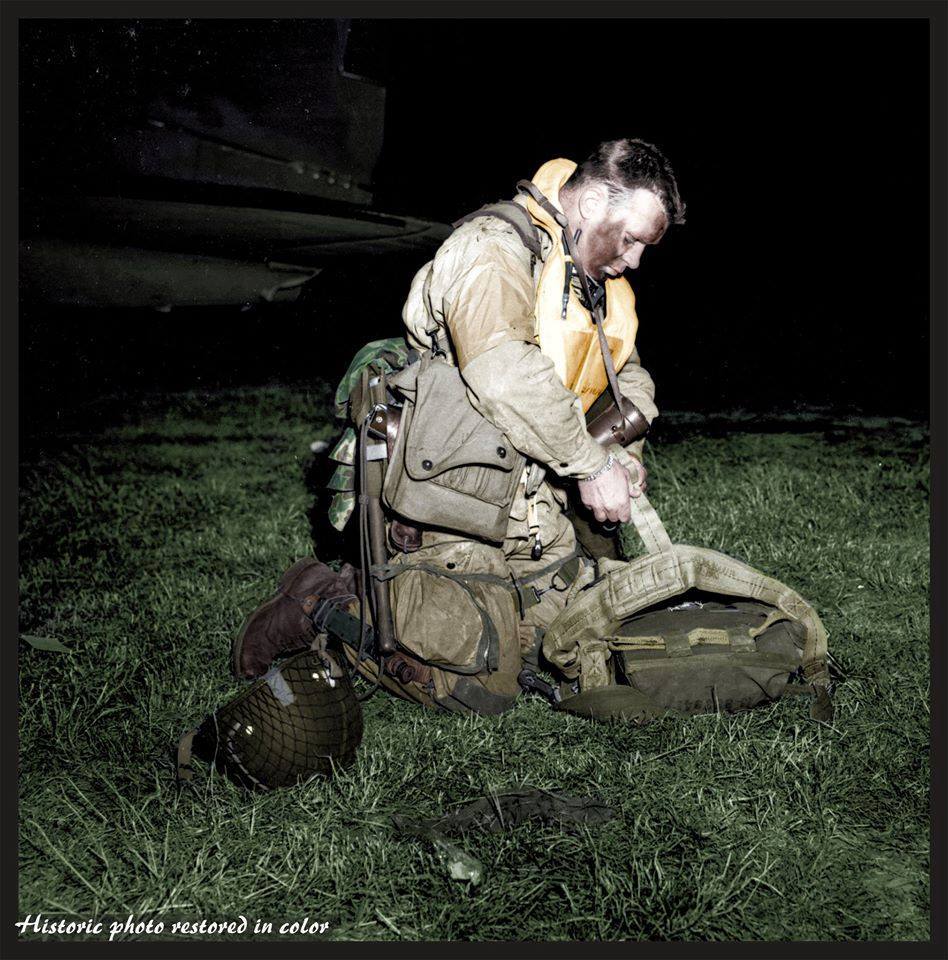
Col. Robert “Bull” Wolverton, commander of the 3rd Bn., 506th PIR, 101st Airborne Division is preparing to jump on Saint-Come-du-Mont, Normandy.
Part of the same regiment to which belonged the legendary “Band of Brothers,” Wolverton’s men fought in the epic Operation Overlord, Operation Market Garden and Battle of the Bulge in Bastogne. Despite being killed before landing on French soil (Order of battle for the American airborne landings in Normandy), Wolverton’s legacy endured, particularly on the strength of a prayer spoken to the 750 men in his battalion hours before the D-Day parachute drop behind enemy lines.
Wolverton’s words were cited by President Ronald Reagan in a 1984 speech from Normandy on the 40th anniversary of the invasion and recounted in numerous books and in Newsweek and Associated Press stories on a battalion reunion held in Kansas City on the first D-Day anniversary after the war .
Colorized by Johnny Sirlande. Image and text source: WW2 Colourised Photos.
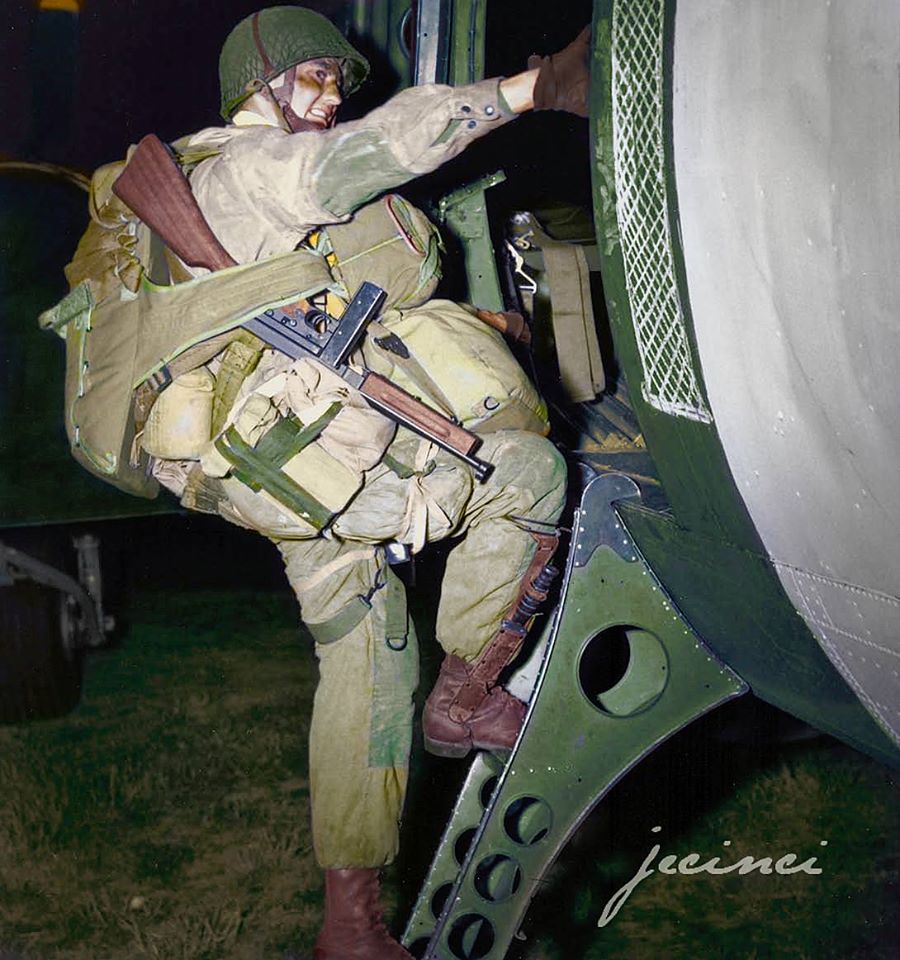
Sgt. Joseph F. Gorenc from Sheboygen, Wisconsin, the assistant S3 of HQ/3, 506th PIR, 101st Airborne Division climbing aboard the lead transport aircraft C-47 Dakota 8Y-S “Stoy Hora” of the 440th Troop Carrier Squadron at Upottery Airfield, Exeter, UK on the night of 5/6th June 1944. Sgt. Gorenc was taken prisoner on June 8th at St. Côme-du-Mont and reported as MIA. He apparently later escaped from a Prison train and he saw action again during ‘Operation Market Garden’.
He returned home after the war, married, had two daughters, and at the age of 34 was an officer in a new startup manufacturing firm. While he, the owner and another man were working late in the shop one night, an oil tank exploded. The other man, Joe and the owner were all injured but Joe’s injuries were life threatening and he died two weeks later on October 30, 1957.
Photo: US Signal Corps, colorized by Jecinci. Image and text source: WW2 Colourised Photos.
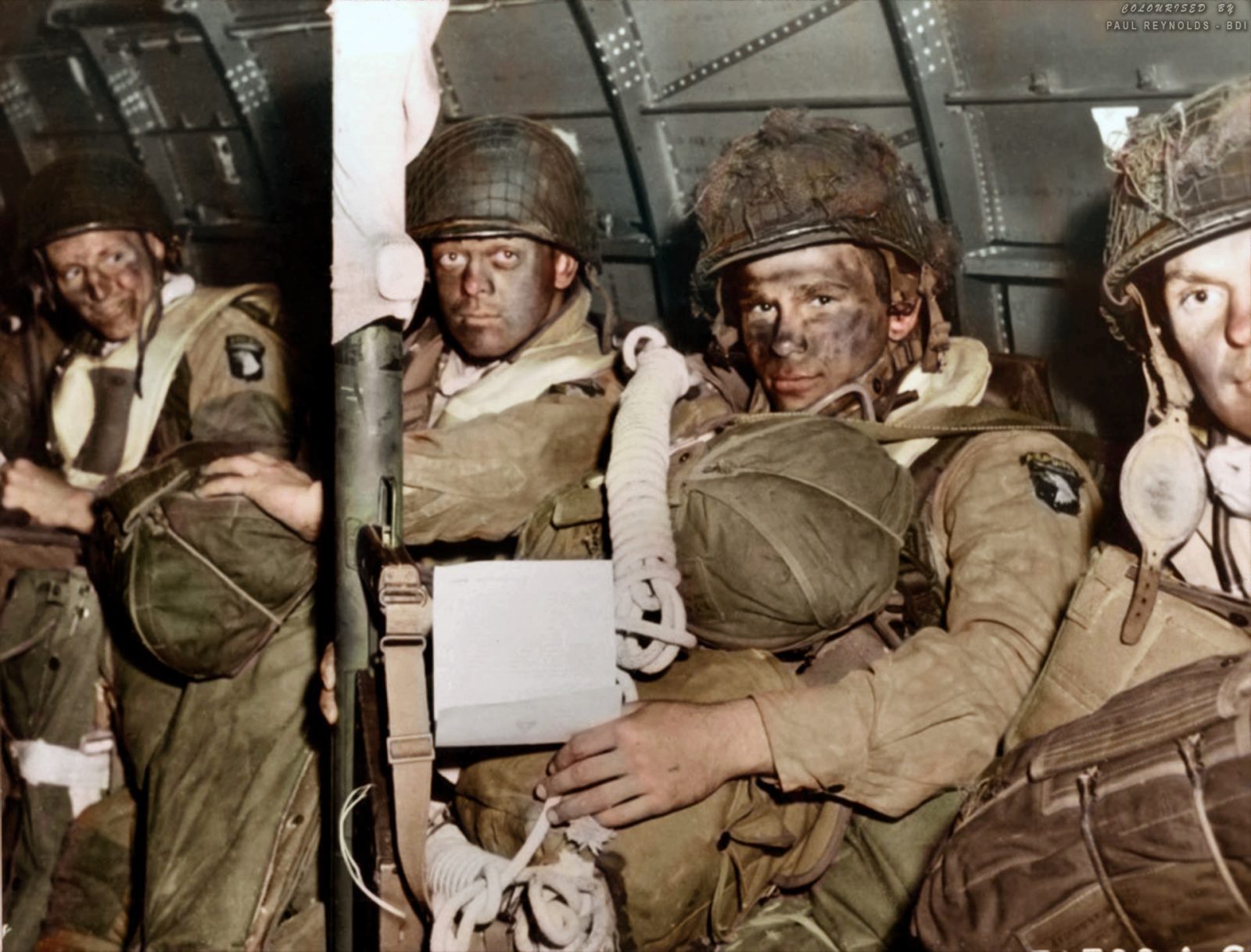
Troops from F-Company, 2nd Battalion, 506th PIR, 101st Airborne Division with full packs and a bazooka, in a C-47 just before take-off from RAF Upottery Airfield to Normandy, France on the 5th of June 1944. This photo took on a life of its own after publishment. In the picture Robert J. “Bob” Noody (with the bazooka) remembers he must have weighed at least 250 lbs, encumbered with his M-1 rifle, the bazooka, three rockets, land mines, and other assorted equipment and supplies.
The 101st Airborne Division, as part of the VII Corps assault, jumped in the dark morning before H-Hour to seize positions west of Utah Beach. As the assault force approached the French coast, it encountered fog and anti-aircraft fire, which forced some of the planes to break formation. Paratroopers from both the 82d and 101st Airborne Divisions missed their landing zones and were scattered over wide areas.
Colorized by Paul Reynolds. Image and text source: WW2 Colourised Photos.
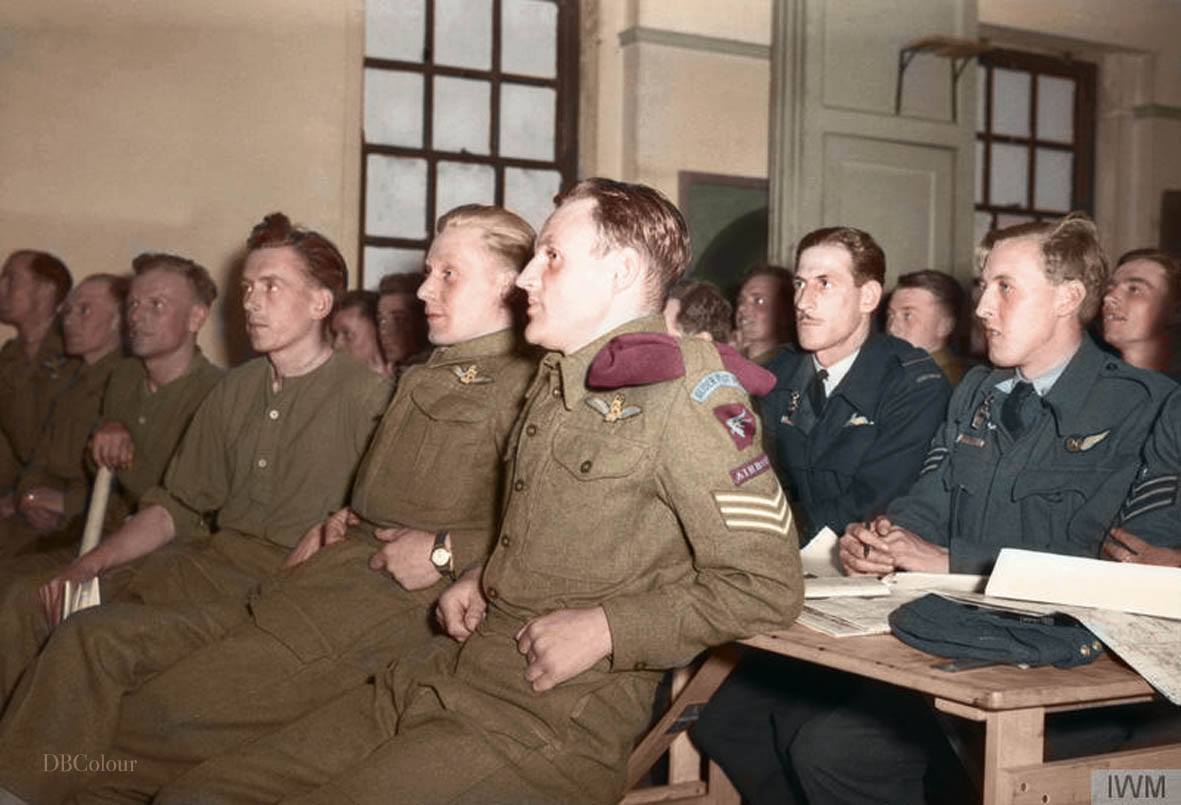
Glider pilots of 6th Airborne Division and RAF crews are briefed at RAF Harwell in Berkshire, UK for the D Day invasion, 5 June 1944. The invasion had to take place some time between the 5th and 7th June, because it was a period that favoured the airborne troops with a late-rising full Moon and also gave the correct tide conditions for a sea-borne assault.
Good weather was essential for a successful attack, not just for the troops at sea, but also for those in the air. High winds would account for many casualties amongst the paratroopers before a shot was fired, whilst the gliders would be at a greater risk of their tow ropes breaking before they reached the landing zone.
Photo by War Office official photographer Capt. E.G. Malindine, from the collections of the Imperial War Museum, London. Colorized by DBColour. Image and text source: WW2 Colourised Photos.
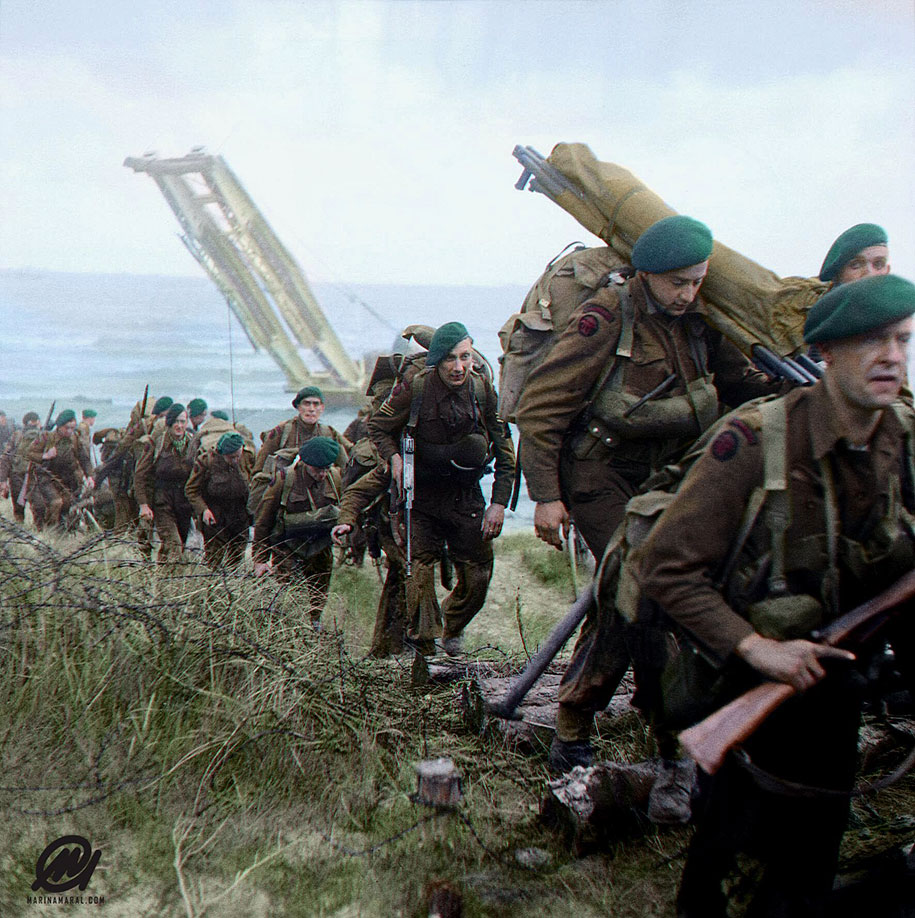
Royal Marine Commandos attached to 3rd Division move inland from Sword Beach on the Normandy coast on June 6, 1944.
Colorized by Marina Amaral.
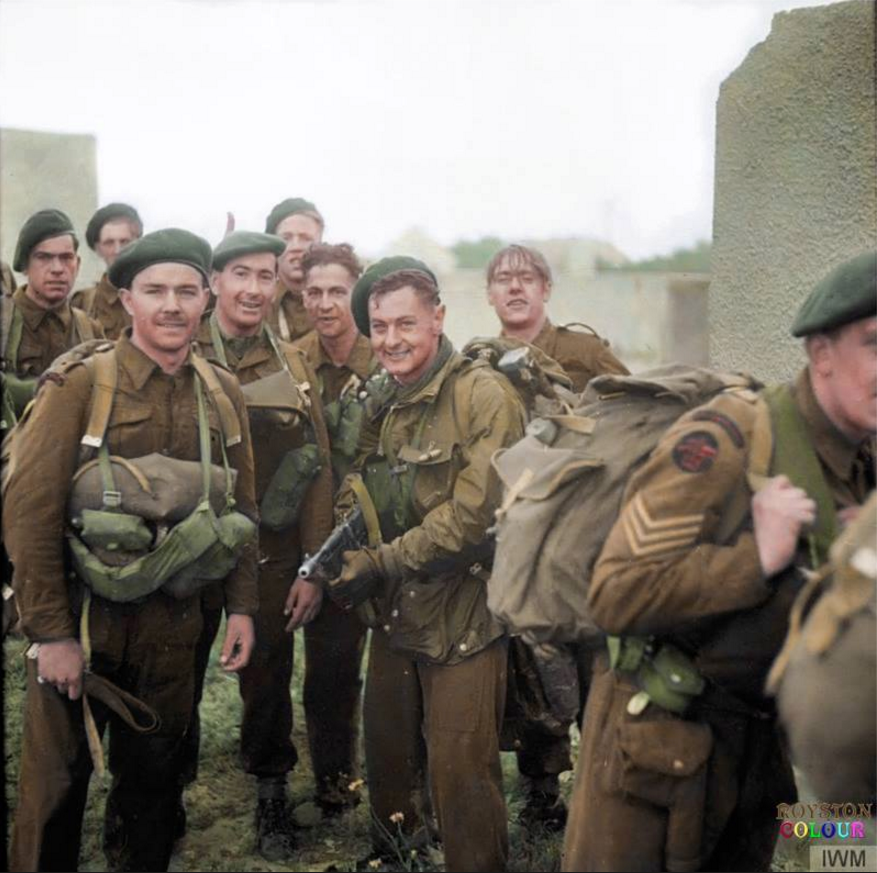
Troops from the British 4 Commando, 1st Special Service Brigade, after landing on ‘Queen Red’ beach, Sword area and ready to advance into Ouistreham. 6 June 1944.
Photo from the collections of the Imperial War Museum. Colorized by Royston Leonard.
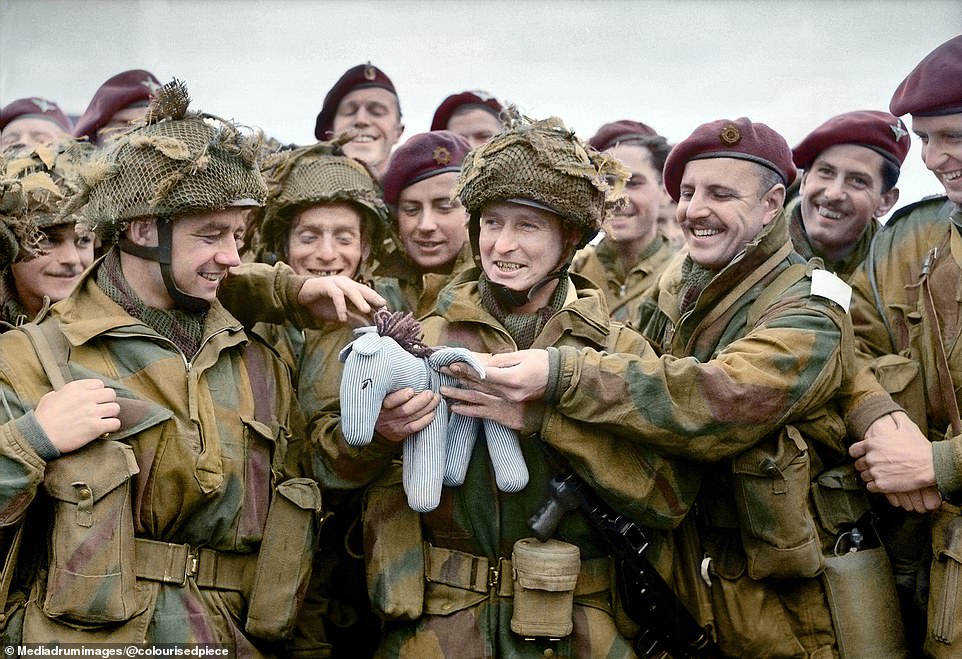
Paratroopers of the 22 Independent Parachute Company, British 6 Airborne Division, with their toy mascot ‘Pegasus’ at RAF Harwell, 5 June, 1944.
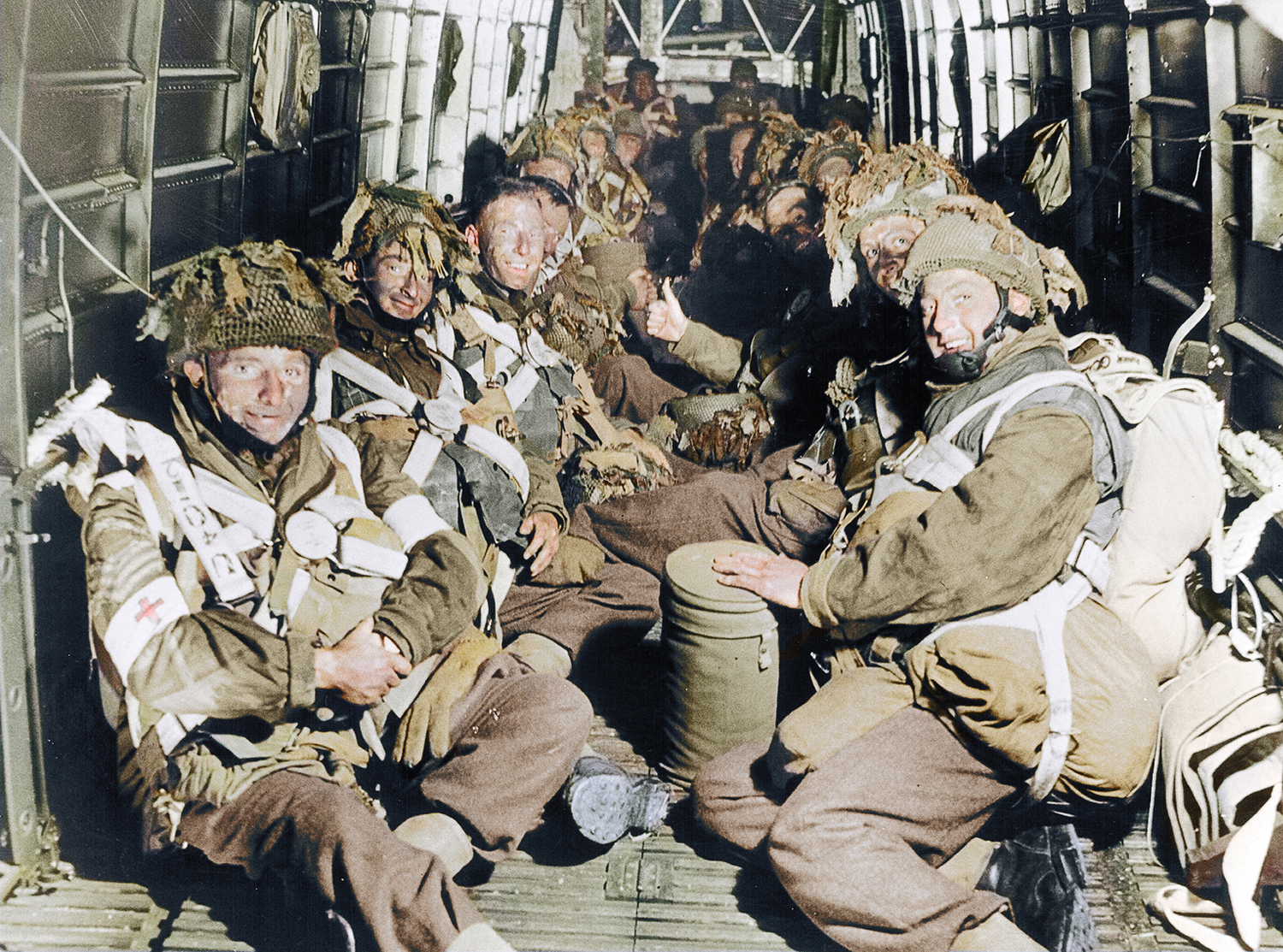
British paratroops of the 6th Airborne Division aboard an aircraft en route to their drop site during the D-Day Invasion of Normandy, World War II, June 6, 1944.
Colorized by Marina Amaral.
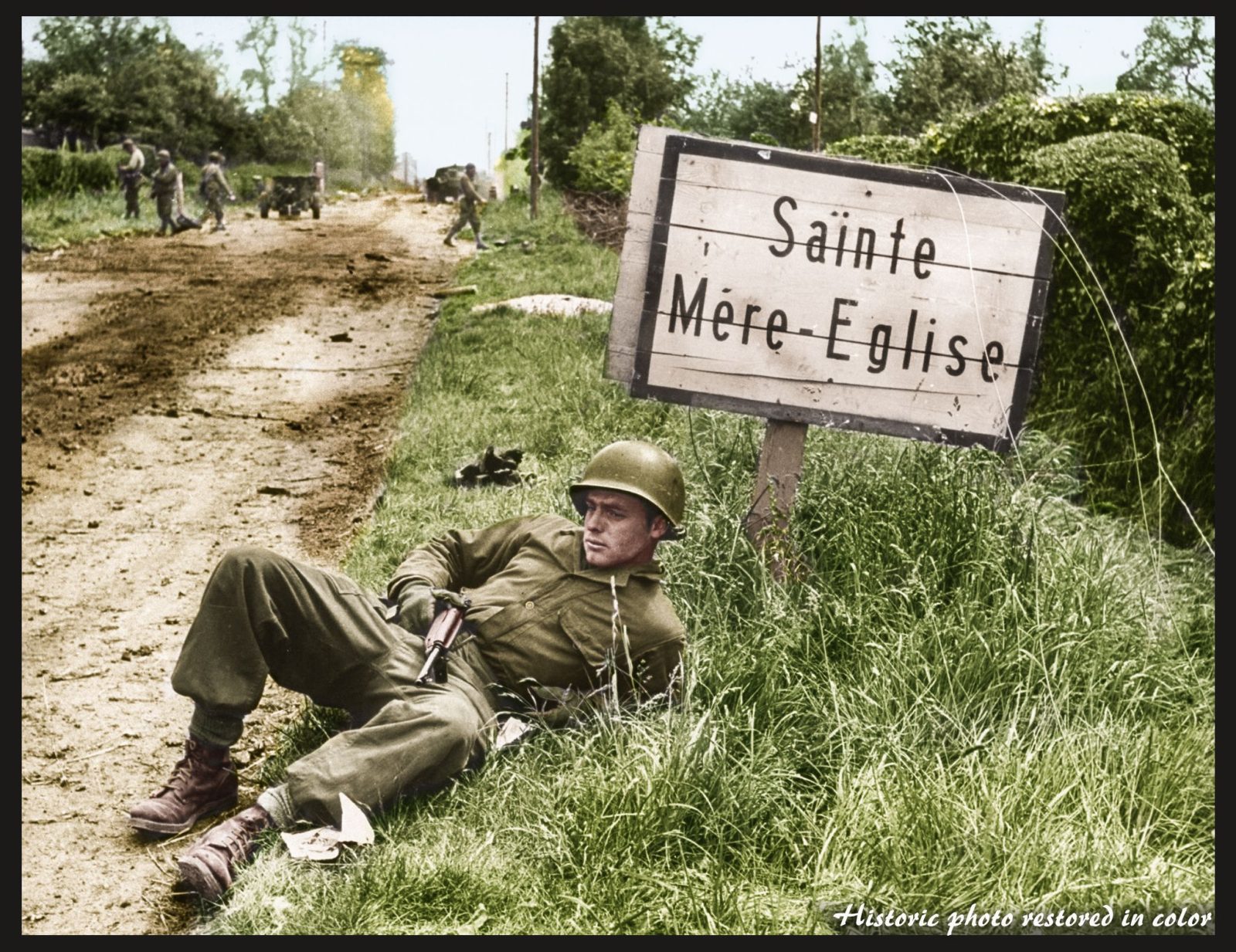
D-Day+2 American soldier Elmer.W. Habbs ” 82nd Airborne Division -All American” of Delaware resting next to signpost for the French town of Ste. Mere-Eglise as troops advance on the 2nd day of the Allied invasion of Normandy.
Photo by Bob Landry//Time Life Pictures, colorized by Historic photo restored in color.